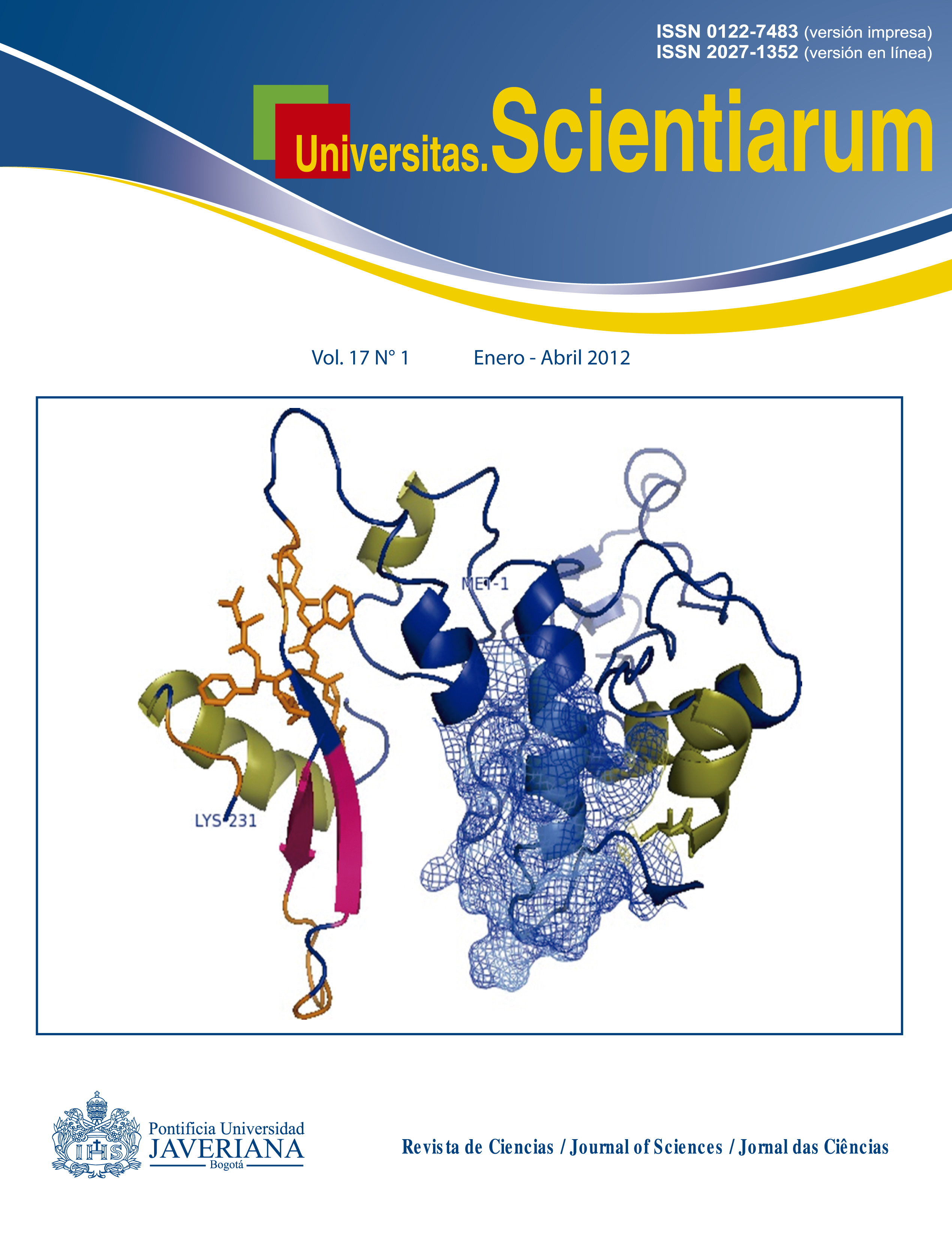Abstract
Objective. Predict by computational means the 3D structure of the antigenic protein LIC10494 and report associated important functional regions for its pathogenicity and immunogenicity. Materials and methods. We performed a computational analysis of the primary structure of LIC10494 using the servers BLAST, PROTPARAM, PROTSCALE, DAS, SOSUI, TOPPRED, TMAP, TMpred, SPLIT4, PHDHTM, TMHMM2, HMMTOP2, GLOBPLOT and PROSITE. The secondary structure was obtained by consensus of the algorithms SOPM, PREDATOR GOR4, DPM and DSC. The approach to the tertiary structure was obtained using the algorithm MUSTER. The energy minimization was done using the AMBER94 force field of the Schrodinger suite of molecular analysis, and the stereochemistry and energy model validation was performed by the RAMPAGE server. The final model was visualized using PyMol V.0,98. Results. This study proposes a computational model that describes the 3D structure of the hypothetical lipoprotein LIC10494 and agrees with previous experimental reports; thus, our study demonstrates the existence of patterns that could play an important role in the pathogenicity and protection of the bacteria against the host immune system; the presence of a disorganized region between amino acids 80 and 140, and of a transmembrane segment between amino acids 8 and 22. Conclusion. The coincidence between structural and functional segments suggests that our model can be used to predict certain aspects of the biological behaviour of the protein according to the pathogenic and immunogenic characteristics of the bacteria.
Key words: Antigen, Bacteria Leptospirosis, LIC10494, Outer membrane protein.
Univ. Sci. is registered under a Creative Commons Attribution 4.0 International Public License. Thus, this work may be reproduced, distributed, and publicly shared in digital format, as long as the names of the authors and Pontificia Universidad Javeriana are acknowledged. Others are allowed to quote, adapt, transform, auto-archive, republish, and create based on this material, for any purpose (even commercial ones), provided the authorship is duly acknowledged, a link to the original work is provided, and it is specified if changes have been made. Pontificia Universidad Javeriana does not hold the rights of published works and the authors are solely responsible for the contents of their works; they keep the moral, intellectual, privacy, and publicity rights. Approving the intervention of the work (review, copy-editing, translation, layout) and the following outreach, are granted through an use license and not through an assignment of rights. This means the journal and Pontificia Universidad Javeriana cannot be held responsible for any ethical malpractice by the authors. As a consequence of the protection granted by the use license, the journal is not required to publish recantations or modify information already published, unless the errata stems from the editorial management process. Publishing contents in this journal does not generate royalties for contributors.



